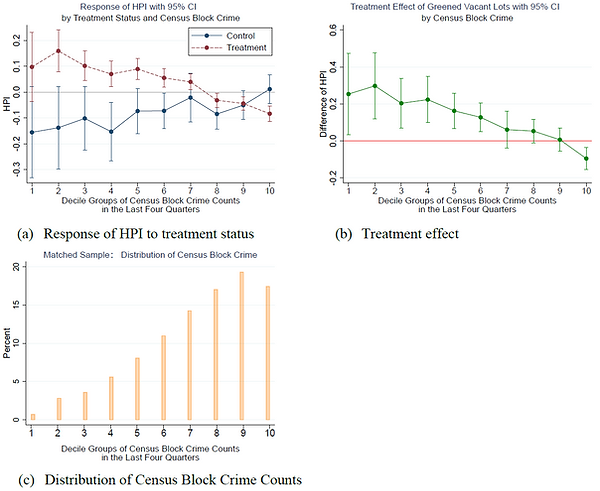Lin, Jensen and Wachter (2023): The Price Effects of Greening Vacant Lots:
How Neighborhood Attributes Matter
Citation: Lin, D., Jensen, S. T., &Wachter, S. M. (2023). The price effects of greening vacant lots: How neighborhood attributes matter. Real Estate Economics, Vol 51 (3), 573–610. https://doi.org/10.1111/1540-6229.12401

“Let every House be placed, if the Person pleases in the middle of its platt as to the breadth way of it, that so there may be ground on each side, for Gardens or Orchards or feilds [sic], that it, may be a greene Country Towne, [which] will never be burnt, and allways be wholsome.”
– William Penn (1682)

Transforming Vacant Land
Vacant lot “cleaning and greening” is a simple but potentially effective strategy for mitigating negative effects of blighted land on surrounding property values.
Philadelphia, long plagued by property abandonment, is a pioneer in remediation programs.
LandCare in Philadelphia
LandCare Program of the Pennsylvania Horticultural Society (PHS) was designed to be scalable and applicable for the many vacant lots in Philadelphia’s disinvested and distressed neighborhoods.
The key steps of vacant lot remediation include:
-
removing trash and debris
-
grading the land
-
planting grass and some trees
-
installing low wooden post-and-rail fences with walk-in openings around lot’s perimeter


Greened Lots vs Parks: Same Green Space?
While parks and greened vacant lots can both supply green space to neighborhoods, they differ in two fundamental aspects: the size and the spatial distribution
-
Greened vacant lots are much smaller than the pocket parks
-
Greened vacant lots are more concentrated in the neighborhoods with lower median household income and higher vacant land share

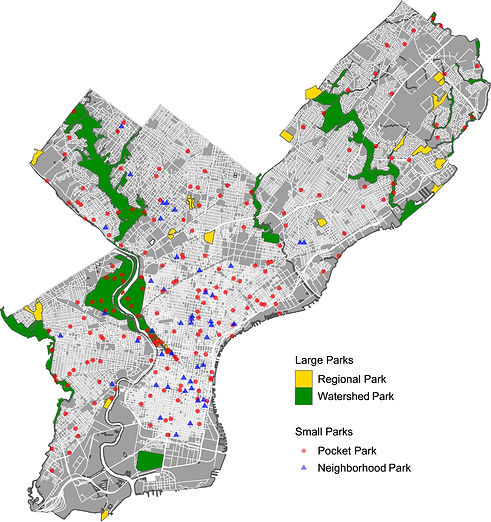
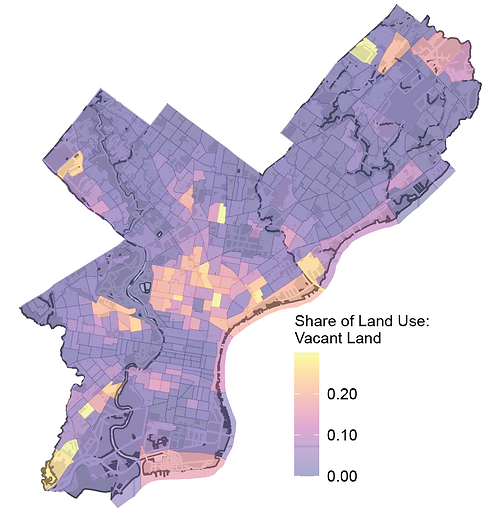
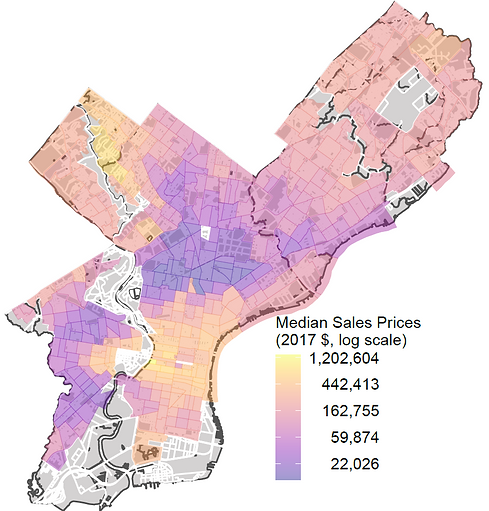
Greened Lots Mitigate the Negative Price Effect of Land Vacancy
Properties within a 1,000 foot radius of a greened lot experience on average a 4.3% rise in value after the first year and a 13% cumulative increase after six years.
The treatment effect is increasing in the vacant land share and reaches the peak around 19%, narrowing the pre-treatment price gap (-21.9%) between a property next to a vacant lot and a property 1,000 feet away from a vacant lot.


"The measured price effect benefits are an order of magnitude larger than the costs. Using the median priced home ($250,000) multiplied by the number of homes within 1,000 feet (about 18) and by the treatment effect (4.3%) results in a benefit of $193,500, or $9,675 annualized at a 5% discount rate, which exceeds the annualized cost of $375 ($300 upkeep and 5% of $1,500 installation cost)"

Vacant Lot Greening is Most Effective in Mid-income Neighborhoods
The treatment effect is increasing in median household income in neighborhoods with 60-140% of the City's median household income.
Neighborhoods with the median household income 20-40% above the City's median household income see the largest impact.
Bigger Gardens or More Gardens?
The effects vary by the spatial intensity of greening activities: greened lot concentration and landscape size.
With comparable total areas of vacant lands, building more landscapes of smaller sizes has a larger impact on nearby properties.
The overall impact is most strongly related to the border as opposed to the size of the lot. Hence, these smaller lot conversions will have an outsized effect on nearby house values.

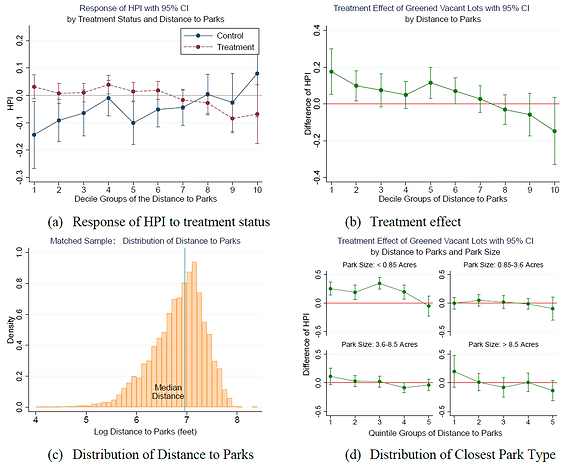
Are Greened Lots and Parks Substitutes or Complements?
If greened lots and parks are substitutes, a smaller effect for properties closer to parks is expected. On the contrary, nearness to parks augments the price effect of vacant lot greening.
Park size also matters. The treatment effect of vacant lot greening comes from smaller parks. Greened lots are not substitutes for parks but complement the pocket parks and the small-size neighborhood parks to create green space amenities.
Is the effect of vacant lot greening a consequence of crime reduction?
No. The effect of greened vacant lots on housing prices is positive and significant only in the census blocks below the 60th percentile of the crime count distribution. Vacant lot remediation is not a cure for all.
By comparing the crime counts between the neighborhoods with treated and control sales, we do not find evidence for substantial crime reduction in neighborhoods with treated sales.
This suggests that the positive price effect of vacant lot greening is not mainly due to crime reduction but is associated with a direct amenity effect.
